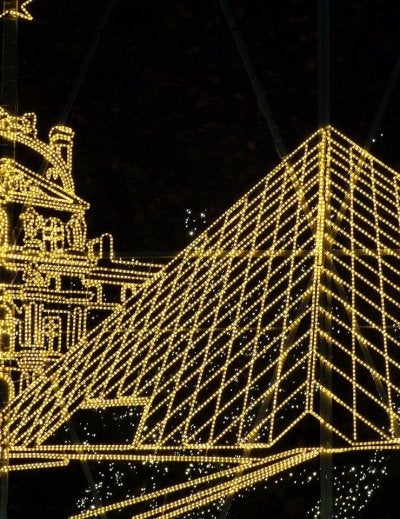
Owara Kaze no Bon Festival in Toyama 2025: A Dance of Wind and Harvest
The Owara Kaze no Bon Festival is an enchanting traditional event held annually in the quaint town of Yatsuo, located outside Toyama City in Toyama Prefecture, Japan. Celebrated for its unique, elegant, and melancholic folk songs and dances, the festival offers a serene, enchanting, and sometimes “ghostly” or “dreamlike” atmosphere, particularly at night.
Festival Dates and Schedule
The Owara Kaze no Bon Festival is consistently held for three days each year, from September 1st to September 3rd. Preliminary performances may occur from August 20th to 30th. In 2025, the main festival runs with the following performance times:
- September 1st (Monday) and September 2nd (Tuesday): Festivities from 4:00 p.m. to 12:00 a.m. (midnight). Some evening performances may run from 5:00 p.m. to 11:00 p.m.
- September 3rd (Wednesday): Festivities from 6:00 p.m. to 12:00 a.m. (midnight). Some evening performances may run from 7:00 p.m. to 11:00 p.m.
While the festival officially concludes around 11:00 PM on most nights, dancing often continues later, sometimes until early morning, particularly on the last night.
Location and Venues
The festival takes place throughout the historic Yatsuomachi district, transforming its traditional streets and old wooden buildings. This includes the 11 different old towns (Kyūchō): Higashishinmachi, Nishishinmachi, Suwamachi, Kagamimachi, Kamishinmachi, Higashimachi, Nishimachi, Imamachi, Shitashinmachi, Tenmancho, and Fukujima.
- Street Performances: Owara street performances occur across the Yatsuomachi district, particularly enchanting when illuminated by thousands of paper lanterns after dark.
- Stage Performances: Dedicated stage performances are held at locations such as the Yatsuo Elementary School grounds (Owara Performance Site), a special stage in front of Etchū-Yatsuo Station, the Toyama City Yatsuo Hikiyama Exhibition Hall, and the Etchū-Yatsuo Tourist Center, which also hosts nightly stage performances.
Historical Origins and Significance
The Owara Kaze no Bon Festival originated approximately 300 years ago, dating back to the Genroku Era (around 1700 AD) during the Edo period. It began as a ritual to appease the wind god (“Kaze no Bon” translates to “Bon Dance of the Wind”) and pray for a bountiful rice harvest, seeking protection from typhoons and good fortune for local crops. One theory links its origin to a three-day celebration in March 1702 for the establishment of Yatsuo. The festival also coincides with Japan’s Disaster Prevention Day (September 1st). The term “Bon” refers to a local custom of holidays related to agricultural activities, while “Owara” may come from “oowara” (abundant harvest), “Owara village,” or “Oowarai” (lots of laughter). Today, it has evolved into a popular cultural event, drawing 200,000 to 300,000 sightseers annually from all over Japan, symbolizing hope and gratitude for the harvest.
Key Features: Dance, Music, and Attire
The festival is renowned for its distinctive artistic elements:
- Elegant Dance: The central element is a graceful, slow, hypnotic, and elegant dance, performed in synchronized unison. This subtle style distinguishes it from other Obon dances. Women’s dances are known for their curvaceous beauty and often portray the four seasons, while men’s dances are more dynamic, mimicking farming movements (sometimes called “scarecrow dance”). All movements are delicate and slick.
- Melancholic Music: The melodies for the dances feature “Ecchu Owara-bushi” folk songs with a sad, wistful tone. Instruments, played by musicians known as “jikata,” include the shamisen (a three-stringed Japanese lute or guitar, which carries the main melody), the kokyū (a traditional Japanese bowed string instrument, often described as a Japanese violin or fiddle, and notably the only bowed string instrument in Japan, which adds a melancholic tone), taiko drums (providing a light rhythmic beat), and flutes.
- Traditional Attire: Dancers wear matching yukata (colorful summer kimonos, with women’s long sleeves often floating with the wind) or happi coats (traditional jackets, often indigo-dyed, for men) and distinctive low-brimmed straw hats (okesa-gasa) that obscure their faces. These hats traditionally show respect, emphasize the collective nature of the dance, and symbolically hide faces from the wind god’s wrath or due to shyness. Traditionally, participants were unmarried individuals under 25, a practice rooted in superstition as a form of “sacrifice” to appease the gods. Modern interpretations also include it as a way for young unmarried people to socialize, and due to shrinking local populations, exceptions are now made to this tradition.
Nighttime Atmosphere
The festival is particularly enchanting after dark. Yatsuo’s historic streets and old wooden buildings are illuminated by thousands of glowing paper lanterns, creating a melancholic, serene, enchanting, and sometimes “ghostly” or “dreamlike” ambiance. Night processions typically run from 8:00 PM until early morning. To avoid the largest crowds and experience a more intimate atmosphere, it is often advised to visit after 11:00 PM, especially on the last night.
Community Involvement
The festival involves 11 town subdivisions, known as “Kyūchō” (Old Town). Each Kyūchō has its own subdivision of the Toyama Prefecture Folk Song Etchu-Yatsuo Owara Preservation Society, leading to unique variations in singing, dancing styles, choreography, costume colors/patterns, and song lyrics, showcasing the strong community ties.
Accessibility and Transportation
The festival area in Yatsuo is accessible from Toyama City.
- By Train: From JR Toyama Station, take the JR Takayama Line to Etchū-Yatsuo Station, which typically takes 20-30 minutes and costs ¥330 one-way. During the festival, special shuttle trains often operate. Securing a free numbered ticket (seiri-ken) distributed at Toyama Station an hour before departure is advisable due to crowds. From Etchū-Yatsuo Station, it’s about a 30-minute walk or a 10-minute taxi ride to the town center (taxi availability may be limited during vehicle restrictions).
- By Bus: A Chiho Bus from JR Toyama Station to Yatsuo takes approximately 50-60 minutes. Free shuttle buses usually run between Toyama Station and the festival area during the event dates, taking approximately 30 minutes. A local bus connects Etchū-Yatsuo Station to the town center in about 12 minutes.
- By Car: Driving from Toyama Interchange (IC) or Toyama Nishi Interchange (Nishi IC) takes approximately 40-60 minutes, though some sources mention 20-25 minutes. From Toyama Airport, it’s about 25 minutes. While parking lots are usually available, they are often located far from the main festival areas, with a requested donation of around 3,000 JPY in past years (supporters may receive original goods). Shuttle buses typically connect these parking areas to the venue. Public transportation is generally recommended as the more convenient and budget-friendly option due to expected traffic congestion and crowds.
Cost and Offerings
There is no general admission fee to enjoy the festival’s atmosphere on the streets. However, special stage performances, such as those at the Hikiyama Exhibition Hall, may have an admission fee (e.g., 3,500 JPY for an unreserved seat). Visitors can find numerous stalls selling local handicrafts (including Yatsuo Washi – traditional Japanese paper), regional food and drink items (such as Toyama’s fresh seafood, Hida beef skewers, and local sake), and traditional games. Local restaurants also emphasize fresh Toyama ingredients.



